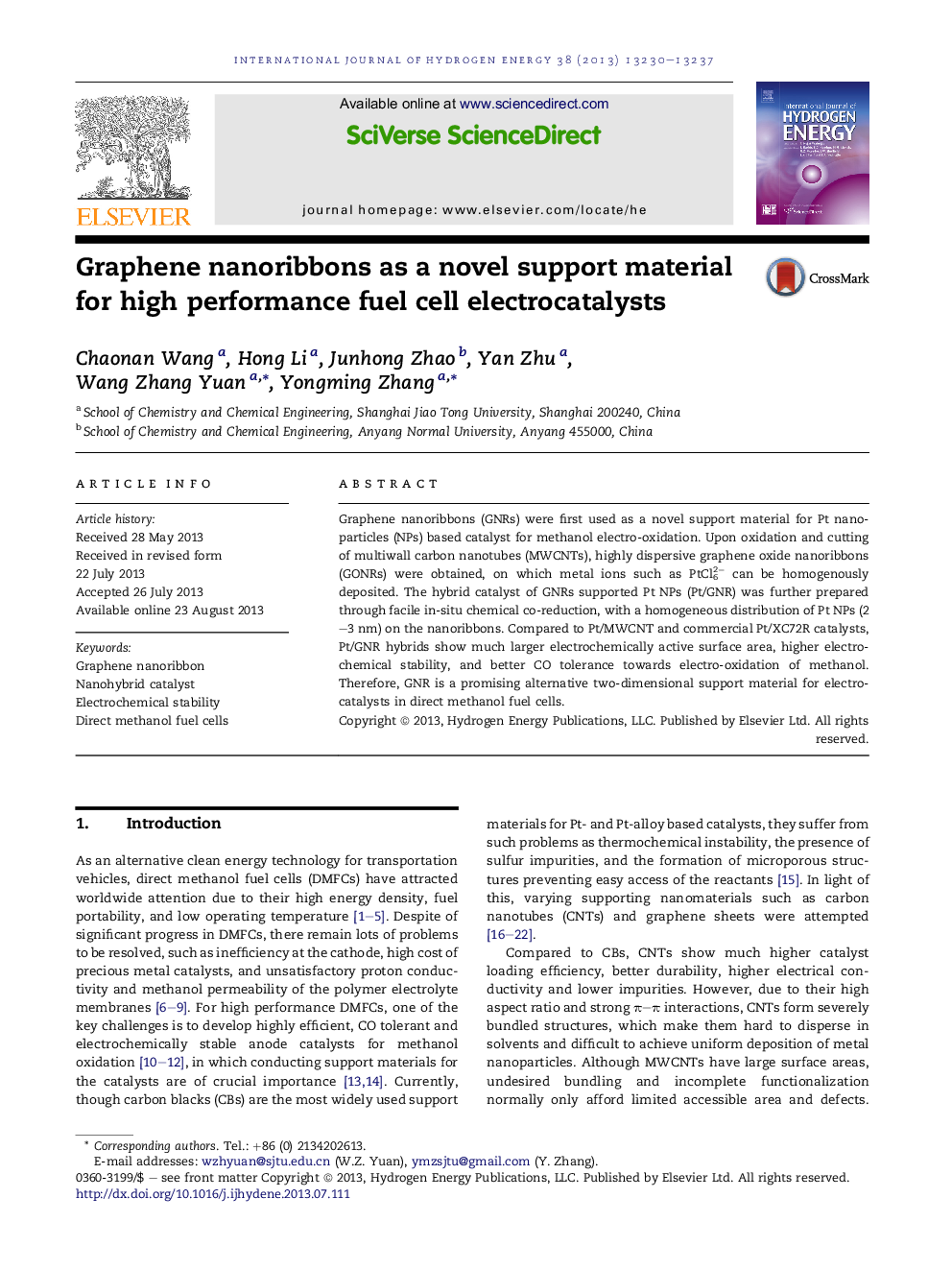| Article ID | Journal | Published Year | Pages | File Type |
|---|---|---|---|---|
| 1273328 | International Journal of Hydrogen Energy | 2013 | 8 Pages |
•Graphene nanoribbons were first used as novel support materials for Pt NPs.•A uniform Pt NPs (2–3 nm) deposition on highly dispersed GNRs with few aggregates.•Pt/GNR has excellent polarization performance, CO tolerance and catalytic stability.•Redispersable monolayered Pt/GNR hybrids were formed owing to the well intercalation of Pt NPs.
Graphene nanoribbons (GNRs) were first used as a novel support material for Pt nanoparticles (NPs) based catalyst for methanol electro-oxidation. Upon oxidation and cutting of multiwall carbon nanotubes (MWCNTs), highly dispersive graphene oxide nanoribbons (GONRs) were obtained, on which metal ions such as PtCl62− can be homogenously deposited. The hybrid catalyst of GNRs supported Pt NPs (Pt/GNR) was further prepared through facile in-situ chemical co-reduction, with a homogeneous distribution of Pt NPs (2–3 nm) on the nanoribbons. Compared to Pt/MWCNT and commercial Pt/XC72R catalysts, Pt/GNR hybrids show much larger electrochemically active surface area, higher electrochemical stability, and better CO tolerance towards electro-oxidation of methanol. Therefore, GNR is a promising alternative two-dimensional support material for electrocatalysts in direct methanol fuel cells.
Graphical abstractFigure optionsDownload full-size imageDownload as PowerPoint slide
